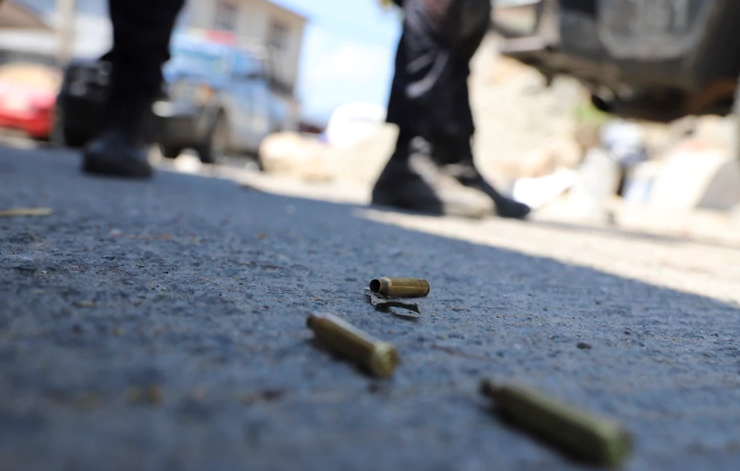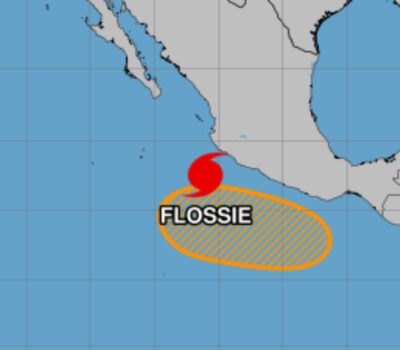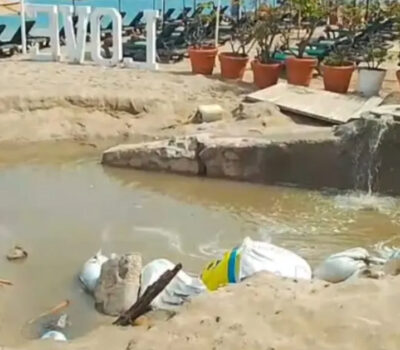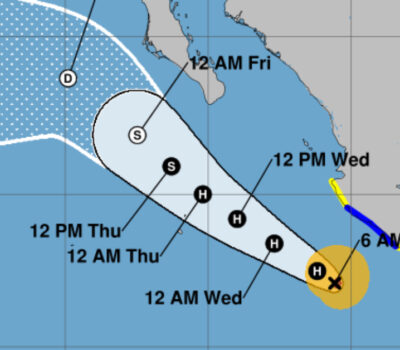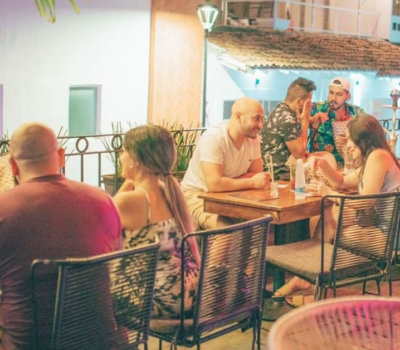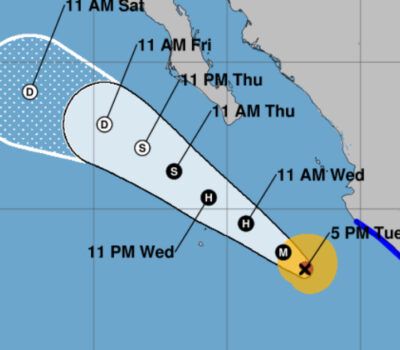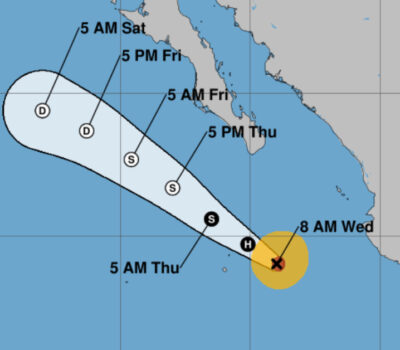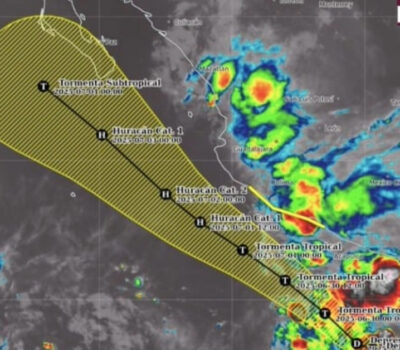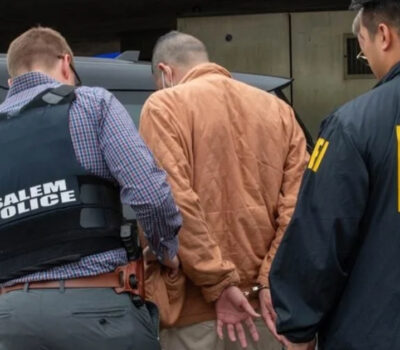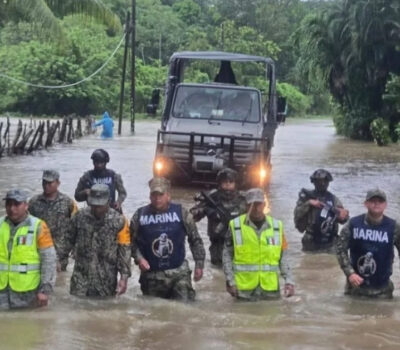Mexico is going through the bloodiest stage of its history. The dispute between the cartels to control a larger part of the national territory each time, and even beyond its borders, has led to a bitter struggle, which day by day has become more violent.
The appearance of new cartels, derived from the internal struggles of large drug trafficking organizations, has left thousands dead and disappeared in most of the country, but Jalisco, Guerrero, and Michoacán are three of the states where the situation has worsened.
Added to this, the capture and extradition to the United States of Joaquín El Chapo Guzmán has diminished the Sinaloa Cartel has been replaced by other criminal organizations, as is the case of the Jalisco Cartel Nueva Generación (CJNG).
So now, the goal of the federal government is to regain control of the territory, security and achieve peace in the country. With this vision is born the National Guard (GN) , which, after a long and debated origin, this June 30 began its formal operations throughout Mexico, but with a strong presence in the states of Mexico, Guanajuato, Guerrero, Jalisco, Michoacán, Oaxaca, Veracruz, Mexico City, Baja California, and Chihuahua; entities that were classified as priorities by the Government of Mexico.
The Birth of a New Cartel in Mexico
The emergence of the Jalisco New Generation Cartel occurred less than ten years ago and quickly went from being a small group of deserters from the now-defunct Millennium Cartel to one of the largest organizations in Mexico, which has extended its tentacles throughout the Americas, Europe, and Asia.
One of the keys to its rapid growth was the strategic presence of operators on the southwest border of the United States, adjacent to Tijuana, and on the northwest border, adjacent to Vancouver, Canada. In addition to this, it has control in areas of the Atlantic and Pacific oceans. Their specialty: the transfer of cocaine and methamphetamines.
From the beginning, the CJNG was characterized by its violence, the reason why the fight for control of territories became increasingly violent. According to information from Mexican and US authorities, the cartel, commanded by Nemesio Oseguera, alias El Mencho, is present in fourteen Mexican states, almost half of the national territory.
Who is El Mencho?
Nemesio Oseguera Cervantes, originally from the Tierra Caliente region of Michoacán, is the founder and leader of the Jalisco Nueva Generación Cartel.
According to a statement from the US Treasury Department, dated April 2015, El Mencho has been deeply involved in drug trafficking activities since the 1990s.
In 1994, the US Court of the Northern District of California sentenced him to three years in prison for conspiracy to distribute heroin. After his release, he returned to Mexico, where he served as a police officer in Cabo Corrientes and Tomatlán, in the state of Jalisco. Later he left the police and returned to his activities in drug trafficking in the (now defunct) Millenium Cartel, an ally of the Sinaloa Cartel, Ignacio Coronel Villarreal, alias Nacho Coronel.
In 2010, after the death of Nacho Coronel and the capture of the leader of the Millennium Cartel, Óscar Orlando Nava Valencia, alias El Lobo, the Millennium Cartel was divided into two factions: Los Torcidos and La Resistencia, which started a battle for the control of drug trafficking in Jalisco. Los Torcidos derived into what is currently the CJNG, with El Mencho as its leader.
Under the command of Mencho, the CJNG began to expand and consolidate its control over drug trafficking in Jalisco and neighboring states, facing the rival cartels Los Zetas and Los Caballeros Templarios. On August 27, 2012, it was rumored that El Mencho had been captured, which triggered a wave of arrests of twenty-eight drug dealers in the metropolitan area of Guadalajara and several municipalities, as well as another six in the state of Colima.
News reports indicate that Nemesio Oseguera was detained for two hours but was released on the orders of the then governor of Jalisco, PAN Emilio González Márquez. The release would have had the support of the federal government, led by Felipe Calderón.
On April 30, 2015, then Governor Aristóteles Sandoval Díaz assured that everything was under control in Jalisco. He insisted that the state public force was sufficient to fight organized crime, without the need for the federals. And although he recognized the great power CJGN had, he said: “We have limited,” and even said that the narcobloqueos were “a thing of the past, from the previous administration” (Governor Emilio González Márquez).
Hours later, on the morning of May 1 , the Jalisco Nueva Generacion Cartel showed its strength by shooting down a helicopter belonging to the National Defense Secretariat (Sedena) with eighteen federal soldiers and police who were pursuing Nemesio Oseguera Cervantes and his staff. The official balance was of six soldiers and eight alleged criminals killed, plus several wounded.
Moments later, Jalisco burned at fifty-five points in thirty-two municipalities, including the metropolitan area of Guadalajara and Puerto Vallarta. At intersections of avenues and strategic road junctions traffic was obstructed, passing through cars, heavy trucks and city buses, almost all in flames.
They also set fire to eleven bank branches, several gas stations and other businesses. The blockades of streets and fires spread to Michoacán, Colima, and Guanajuato. Panic seized the population.
Although El Mencho has continued to elude the authorities, some members of his family have been captured.
Rubén Oseguera González, aka El Menchito, was arrested in January 2014 in the municipality of Zapopan, but in December of the same year, a federal judge ordered his release in the face of the apparent lack of evidence presented by the federal Public Ministry. At the time of his capture, El Menchito carried with him 25 million pesos and firearms.
On June 23, 2015, El Menchito, the presumed financial operator of the cartel, was recaptured and is currently imprisoned in the federal prison of El Altiplano, in the state of Mexico.
Three years later, on May 28, 2018, Rosalinda González Valencia was arrested, identified as the wife of Mencho and accused of the crimes of money laundering and organized crime. The capture was made in the middle of an operation carried out in an exclusive subdivision of the city of Guadalajara. However, months later, in September of that same year, Rosalinda González was released after paying a fine of 1.5 million pesos.
Today, Nemesio Oseguera Cervantes is the main objective of the federal government, although according to President Andrés Manuel López Obrador, his administration does not go for “the heads” of the narco, its objective is to achieve the pacification of the country. And even on January 30, 2019 , almost at the end of his morning conference, Lopez Obrador said that “there is no war” against the narco: “Officially there is no war, we want peace,” he said.
Jalisco, the cradle of the CJGN
Because the state is the base for the CJGN, Jalisco has been the scene of bloody attacks, assassinations, and disappearances of dozens of people, which has made it one of the most dangerous entities in the country for several years.
According to the May 2019 report of the Semáforo Delictivo organization, Jalisco has the highest growth in the crimes of homicide, extortion, drug dealing, vehicle theft and family violence.
From January to May 2019, there were 880 offenses related to drug dealing in the state, while homicides, in the same period, reached 902 (97 occurred in Guadalajara, 77 in Tlajomulco de Zúñiga, 66 in Tlaquepaque, 59 in Zapopan, 53 in Tonalá, 16 in El Salto, 13 in Lagos de Moreno, 8 in Chapala and 6 in Puerto Vallarta).
These figures have led Jalisco to be one of the priority entities of the federal government, hence the important deployment of elements of the National Guard.
Just last Friday, June 21 , a clash between police and members of the CJNG, which lasted several hours in the residential area of Tlajomulco de Zúñiga (derived from a series of attacks against members of the Prosecutor’s Office and the Ministry of Public Security of Jalisco) , left two police officers and two alleged members of organized crime dead, as well as an injured child (son of an agent of the Prosecutor’s Office).
Journalistic versions indicate that that day an anonymous message arrived at the Attorney General of the State of Jalisco. A male voice warned that this morning they would “proceed” against several elements of the prosecution, since they did not reach an agreement with the Jalisco New Generation Cartel.
About ten to fifteen officials of the state government and some municipalities would be “on the blacklist” of the Jalisco Nueva Generación Cartel, admitted Jalisco prosecutor Gerardo Octavio Solis, who acknowledged that, in the attacks of Tlajomulco, the victimizers “fell short”.
One week later, the private secretary of Macedonio Tamez Guajardo, who heads the Strategic General Security Coordination of the Government of Jalisco, was briefly kidnapped. The state government said it was a “robbery,” but his car was found shot.
As early as this week, the government has received threats of more violence throughout the state, including direct threats of violence in Puerto Vallarta.
For several years, the Jalisco government has been accused of having links to drug trafficking. Former prosecutor Luis Carlos Nájera, former governor Aristóteles Sandoval and even current state governor Enrique Alfaro have been accused of being linked to organized crime.
According to journalist Anabel Hernández, since 2018, the Department of Justice of the United States Government (DOJ) has been investigating Alfaro, the Governor of Jalisco, for his alleged links with the Jalisco Nueva Generación Cartel. The US investigation reveals that Alfaro would have “received money in exchange for security and that he let them work.”
Hernandez said that, even, an inmate report from the Ministry of the Navy, prepared in 2014, indicates that an investigation was open against Alfaro and officials who have collaborated during his administrations for alleged links with a financial network headed by María Guadalupe Gastélum Payán, the second wife of the late drug trafficker Juan José Esparragoza Moreno, alias El Azul, related to the Sinaloa Cartel, and his children Brenda Guadalupe, Cristian Iván, Juan Ignacio and Nadia Patricia Esparragoza Gastélum.
In Jalisco, there have also been disappearances and murders related to drug trafficking, which have transcended worldwide.
One of the most notorious cases is the disappearance and presumed death, disintegrated in acid, of three film students of the Audiovisual Media University (CAAV) in Guadalajara, after making a recording on a farm in Tonalá, a school work project, on March 19, 2018.
The disappearance of Javier Salomón, Jesús Daniel and Marcos Àvalos , provoked mass protests. After several arrests, including the aunt of one of the missing students, on April 24 of that year, the state authorities claimed that the students were beaten, killed and that their bodies were dissolved in acid, a version that was rejected by the relatives. One year after that, the relatives of the students continue demanding justice and that the authorities continue with the investigation.
Other disappearances that occurred in Jalisco and that transcended the borders were those of Antonio Russo and Vincenzo Cimmino, who on January 31, 2018, went out to look for their relative Raffaele Russo when three municipal police officers from the town of Tecalitlán detained them and, presumably, they were delivered to members of the Jalisco Nueva Generación Cartel. The family fears they are dead, so the case is already in the Committee against Forced Disappearance of the United Nations (CED, for its acronym in English) and already managed to get the Mexican authorities for the first time a written report about the investigation.
A case that had much impact at national and international level was the so-called “trailer of death”. The newspaper El Universal revealed the existence of a refrigerator box of a trailer containing 157 bodies, due to the lack of infrastructure at the Jalisco Institute of Forensic Sciences (IJFC) to store remains of unidentified persons.
Because in 2013 the General Law of Victims prohibited the incineration of bodies related to violent crimes, the IJFC exceeded the capacity to store bodies, so they rented the trailer and moved it through at least three municipalities of Jalisco with the bodies belonging to unidentified victims of organized crime.
The existence of the “trailer of death” was known thanks to complaints from residents of the municipality of Tlajomulco de Zúñiga, who reported the presence of a foul odor emanating from the vehicle.
The events caused outrage not only in Mexico but worldwide.
Mexico is going through the bloodiest stage of its history. The dispute between the cartels to control a larger part of the national territory each . . .

